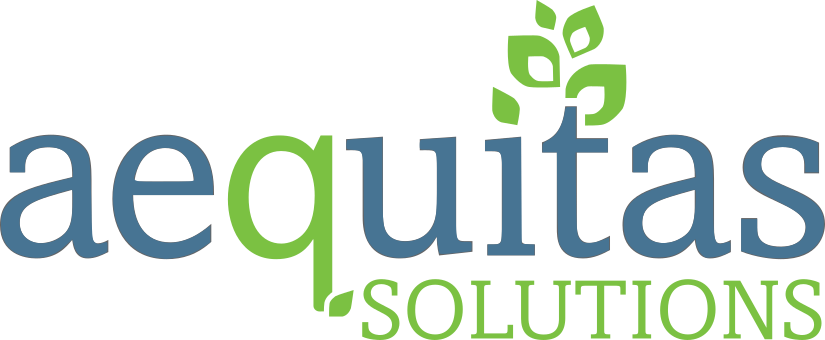Implementing a new SIS isn’t just about adopting new software; it’s about transforming a school district’s operations. The right SIS can enhance administrative efficiency, improve communication, and ultimately support student success. However, achieving these benefits depends on a well-crafted implementation strategy.
Switching to a new K-12 Student Information System (SIS) can be a large undertaking for any district. Between juggling change management, data conversion, tight timelines, and ensuring minimal disruption, it can be easy for school districts to feel overwhelmed during this process. A thorough implementation plan can help districts manage the conversion to the new SIS product more effectively.
A successful SIS launch requires a multi-step process, careful planning, and a practical approach. This blog explores the journey of implementing an SIS, highlighting key phases and strategies to streamline processes.
Pre-Implementation Phase
Before implementing, school districts go through a comprehensive pre-implementation phase to lay the groundwork for a successful transition. This begins with a thorough needs assessment during which district stakeholders identify their requirements in a new SIS. This involves stakeholder interviews with administrators, faculty, IT personnel, and others to understand existing workflows and pain points.
Choosing the right vendor is paramount to the success of an SIS implementation. School districts should evaluate vendors based on system features, scalability, vendor reputation, support services, and compatibility with the existing IT infrastructure. The vendor should be able to demonstrate how their capabilities (product, people) will support the district’s strategic goals and vision for improving administrative efficiency and student experience.
Once an SIS vendor is selected, they work closely with the school district to develop a detailed project plan. This plan outlines implementation milestones, timelines, resource allocation, points of contact, and responsibilities. Establishing clear communication channels and expectations sets the stage for a smooth implementation process.
Implementation Phase
With the groundwork laid, school districts move into the implementation phase, where their selected SIS is configured and data is loaded in preparation for the new SIS to support daily school operations. This phase consists of four key steps, listed below.
1. Installation and Configuration
The vendor plays a pivotal role in installing and configuring the SIS according to the school district’s specific needs. This includes setting up cloud or hardware infrastructure, installing software components, and configuring the system to align with district workflows and policies.
2. Data Migration
One of the most critical tasks in an SIS implementation is migrating data from the current SIS into the new system. This often involves transferring a wide range of data, including student demographics, enrollment records, grades, attendance, and disciplinary actions. For example, a school might need to move thousands of student records from the outgoing SIS into the new system.
The new SIS vendor should utilize data migration tools and methods that preserve data integrity, accuracy, and security during the migration process. Below are some examples of these strategies.
- Data Cleansing Tools: These tools help identify and correct inaccuracies, like duplicate records or incorrect data entries, ensuring that only clean, reliable data is migrated.
- Automated Migration Scripts: Vendors often use custom scripts to automate the data transfer process, minimizing the risk of human error.
- Data Validation Techniques: These techniques ensure that the migrated data meets all necessary standards and requirements. For example, validation rules can check for missing mandatory fields, like student ID numbers or birthdates, ensuring completeness and compliance with school policies.
- Incremental Data Migration: An iterative or incremental approach, that facilitates transferring SIS data in stages, reduces the risk of significant disruptions and makes the migration process more manageable for district resources.
These tools and strategies can help schools ensure that their student data is accurately and securely transferred to the new SIS, laying a foundation for administrative efficiency and improved educational outcomes.
3. Training
Effective training ensures all stakeholders—administrators, faculty, staff, and even students—are comfortable using the new SIS. Vendors typically provide comprehensive training tailored to different user roles and responsibilities. These training sessions may include hands-on workshops, online modules, user manuals, and ongoing support to address any learning curve.
- Role-Specific Training: Training programs should be customized for different user groups. For example, administrators might need in-depth training on system configurations and data management, while teacher training could focus on daily operational tasks like grade entry, attendance, and generating reports.
- Hands-On Workshops: Interactive workshops allow staff to use the system in a controlled environment. These sessions simulate real-world scenarios that users might encounter, like submitting behavior referrals or generating customized performance reports.
- Online Modules: Self-paced online modules provide flexibility, allowing users to learn at their convenience. These modules can include video tutorials, step-by-step guides, and interactive quizzes to reinforce learning.
- User Manuals and Documentation: Comprehensive user manuals and documentation are essential references. They should be detailed, yet easy to understand, covering all functionalities of the SIS. Quick reference guides or FAQs can be beneficial for troubleshooting common issues.
4. Testing and Quality Assurance
Before going live, the SIS undergoes user validation testing to verify the data has been migrated successfully and that the system meets various user requirements. This involves the vendor working closely with the district’s IT team for thorough testing to support multiple use cases, like extracting large volumes of data, running report cards, and testing backup and recovery processes. This testing ensures the SIS performs reliably under the district’s real-world conditions.
Post-Implementation Phase
After successfully implementing the SIS, districts move into the post-implementation phase to further optimize the system and support their ongoing operations.
Go-Live and Transition
During the go-live phase, the SIS is officially deployed across the school district. The vendor provides hands-on support and guidance to ensure a smooth transition. This includes monitoring system performance and addressing any immediate concerns that may arise.
Support and Maintenance
Continuous support and maintenance are crucial to an SIS’s long-term success and widespread adoption across the district. The vendor should offer dedicated support channels, including help desks, ticketing systems, and online portals, to address user questions, technical issues, and enhancement requests. Proactive maintenance ensures the SIS remains updated, secure, and aligned with evolving needs.
Evaluation and Feedback
Regular evaluation and feedback from users are crucial for assessing the SIS’s effectiveness. The school district can gather feedback, analyze usage patterns, and pinpoint improvement areas. This information can then be shared with the vendor, creating a feedback loop that guides future updates, feature enhancements, and strategic decisions.
SIS Implementation for Your School
Implementing a Student Information System (SIS) is a multifaceted process that requires careful planning, collaboration, and ongoing support. By partnering with a knowledgeable vendor, school districts can streamline administrative processes, enhance data management capabilities, and improve operational efficiency.
The vendor’s expertise in customization, training, technical support, and continuous improvement streamlines the journey from pre-implementation planning to post-implementation support. With a well-executed SIS implementation and dedicated vendor support, school districts are empowered to focus more on their mission of delivering quality education for every student.
If you’d like to learn more about our Q Student Information System and our implementation process, contact us today.


